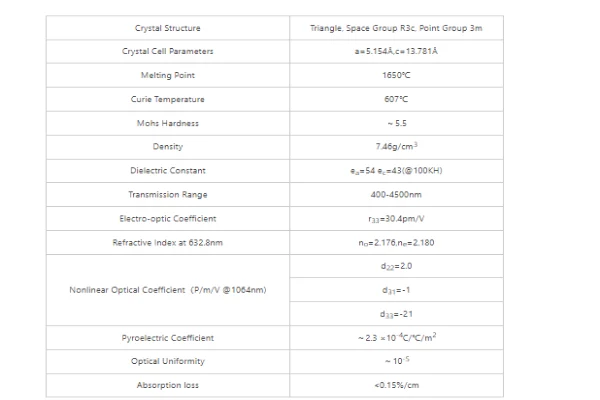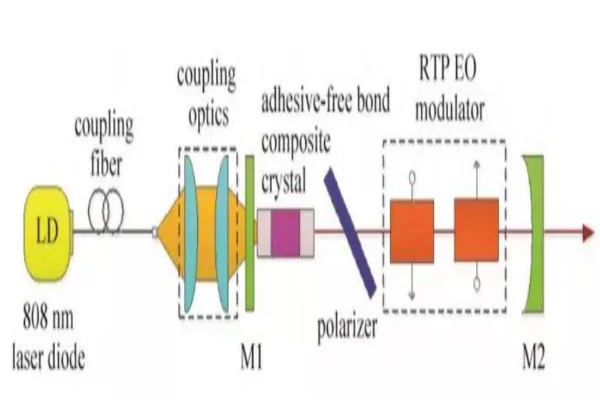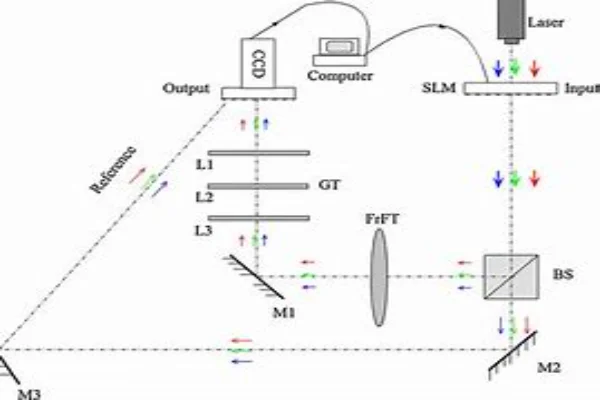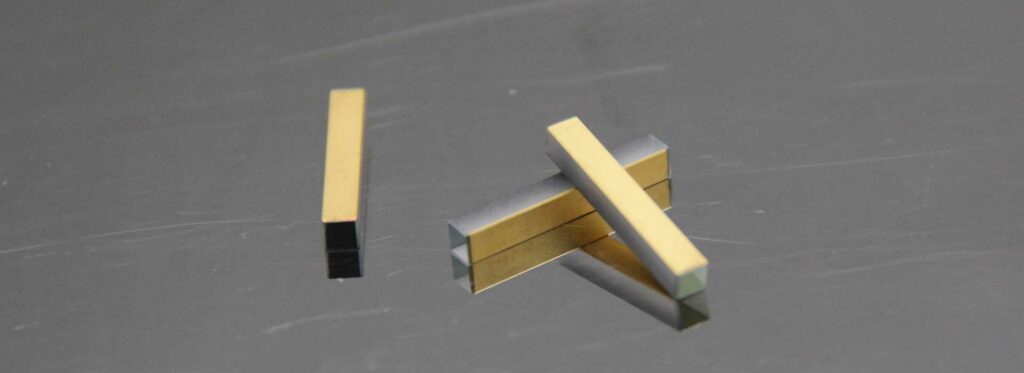Introduction to Optical Modulation and Electro-Optic Crystals
Optical modulators play an essential role in modern communication systems by transforming electronic data into optical signals. The core element in these devices is the electro-optic crystal (E-O crystal), which, due to its unique properties, enables the modulation of light.
Understanding Electro-Optic Crystals
Electro-optic crystals are natural or synthetic crystals with optical properties that change in response to an electric field. This change allows the crystals to modulate the amplitude, phase, or polarization of light, making them ideal for use in optical modulators.
Different Types of Electro-Optic Crystals
Numerous types of electro-optic crystals exist, each with unique characteristics and performance parameters. Lithium niobate (LiNbO3) and lithium tantalate (LiTaO3) are two commonly used materials due to their high electro-optic coefficients, low half-wave voltages, and wide transparency range.
Specific Electro-Optic Crystal Materials: Lithium Niobate (LiNbO3) and Potassium Titanyl Phosphate (KTP)
The choice of electro-optic crystal materials is crucial for the performance and efficiency of optical modulators. Among them, lithium niobate (LiNbO3) and potassium titanyl phosphate (KTP) are two widely applied electro-optic crystals.
-crylink.webp)
Lithium Niobate (LiNbO3)
Lithium niobate is a synthetic EO crystal that is favored for its excellent electro-optic properties and a wide range of transparency. It enables high-speed, efficient optical modulation in fiber-optic communications. Additionally, lithium niobate has good chemical stability and mechanical strength, maintaining steady performance even under extreme conditions.
The electro-optic coefficient of lithium niobate is higher than many other electro-optic crystal materials, meaning it can effectively modulate light at lower electric field strengths. Due to its high nonlinearity, lithium niobate has broad applications in high-speed optical communications, laser technologies, and nonlinear optics.
Potassium Titanyl Phosphate (KTP)
Potassium titanyl phosphate is an excellent nonlinear optical crystal and electro-optic crystal. It has excellent electro-optic coefficients and nonlinear coefficients and boasts a wide range of transparency, making it broadly applicable in optical modulators.
KTP stands out in applications involving laser frequency conversion, optical parametric oscillation, and optical parametric amplification. Its high damage threshold and stable chemical properties make it an ideal choice in high-power laser systems. Additionally, the high electro-optic coefficient of KTP makes it excel in electro-optic modulators, enabling high-speed optical signal modulation.

Electro-Optic Crystals in Telecommunications, Fiber Optic Networks, and Data Transmission
Electro-optic crystals bring significant advantages to telecommunications, fiber optic networks, and data transmission. By capitalizing on their unique properties, we can create systems that are fast, efficient, and versatile.
Ultra-High-Speed Communication
The prime advantage of electro-optic crystals is their capacity for ultra-high-speed signal processing. By modulating optical signals at the speed of the applied electrical signal, which can reach gigahertz (GHz) or even terahertz (THz) frequencies, these crystals enable rapid data transfer rates that are vital in modern telecommunications.
Improved Bandwidth Utilization
Electro-optic crystals allow for the implementation of advanced modulation schemes, such as Quadrature Amplitude Modulation (QAM) and Orthogonal Frequency-Division Multiplexing (OFDM). These techniques dramatically improve the utilization of bandwidth in fiber optic networks, leading to increased data transmission rates.
Low Power Consumption
Compared to electronic devices, optical modulators based on E-O crystals can operate at higher speeds with lower power consumption. This is particularly beneficial in data centers, where reducing power consumption is a priority for improving energy efficiency and reducing operational costs.

Enhanced Signal Quality
E-O crystals can precisely control the phase and amplitude of optical signals, leading to higher signal quality. This results in fewer transmission errors, improved data integrity, and a higher overall Quality of Service (QoS) for telecommunications and data transmission services.
Integration with Existing Infrastructure
Electro-optic crystals can be integrated into existing fiber optic infrastructure. This allows for the benefits of high-speed optical modulation to be realized without requiring a complete overhaul of current systems.
Advantages of Using Electro-Optic Crystals in Optical Modulation
Utilizing E-O crystals in optical modulators offers numerous advantages. Chief among these are high-speed signal processing, compactness, and lower power consumption. E-O crystals’ ability to process signals at high frequencies sets them apart from other optical modulation techniques.
Applications of electro-optic crystals in optical modulators for high-speed signal processing and communication systemms
Electro-Optic Crystals in High-Speed Signal Processing
High-speed signal processing is an integral part of modern communication systems, where rapid data transmission and reception are essential for optimal functionality. Here, electro-optic crystals are pivotal. Their capacity to rapidly modify their optical properties in response to changing electric fields enables the quick modulation of optical signals. This modulation happens at the speed of the applied electrical signal, which can be in the gigahertz (GHz) or even terahertz (THz) range, enabling ultra-fast communication.
Telecommunication Systems and Data Centers
The prime application of electro-optic crystals in high-speed signal processing is in telecommunication systems. As the demand for bandwidth continues to grow, electro-optic crystals facilitate the high-speed modulation required for data transmission over fiber optic networks. In data centers, these crystals are used in optical modulators for high-speed data transmission between servers, thereby enhancing the performance and efficiency of these centers.

Electro-Optic Crystals in Communication Systems
Electro-optic crystals also play a significant role in modern communication systems, providing a means to encode electronic signals into optical ones. This functionality is critical in areas like broadband communication and encrypted communication.
Broadband Communication
In broadband communication, optical signals carrying data must be modulated at high speeds to transfer vast amounts of data over long distances. Electro-optic crystals enable this process, with their quick response to electric fields allowing rapid changes in optical signals. This capability is critical in applications such as internet communication, where high-speed data transfer is essential.
Encrypted Communication
In the domain of secure, encrypted communication, the quick phase and amplitude modulation enabled by electro-optic crystals are crucial. By manipulating the phase, amplitude, or polarization state of light in a precise, high-speed manner, secure communication channels can be established. This is particularly important in military and defense applications, where secure data transfer is paramount.
Satellite Communication
In satellite communication, the ability of electro-optic crystals to perform high-speed signal processing is vital. The high-frequency signal processing capabilities of these crystals allow for the transmission and reception of data over vast distances in space, supporting global communication networks.
Challenges in Implementing Electro-Optic Crystals
Despite their benefits, implementing electro-optic crystals comes with challenges. Material imperfections can lead to signal distortions, and external factors like temperature can affect crystal performance. Addressing these challenges requires careful material selection and system design.
Future Prospects for Electro-Optic Crystals
With advances in materials science and signal processing technology, the potential for electro-optic crystals is immense. Novel crystal materials and advanced manufacturing techniques promise even better performance and more widespread use of these crystals in optical modulation.

Emergence of Novel Crystal Materials
In the realm of materials science, ongoing research and discovery promise the emergence of novel electro-optic crystal materials. These crystals are expected to possess superior electro-optic coefficients, broader transparency ranges, and enhanced thermal and mechanical stability. Such advancements will enable the development of optical modulators with improved performance metrics, paving the way for next-generation high-speed communication systems.
Advanced Manufacturing Techniques
With the progress in manufacturing techniques, it will become possible to produce electro-optic crystals with superior quality and precision. These techniques can enhance the uniformity and purity of the crystals, leading to improved modulator performance. Furthermore, these advancements can potentially make the production of electro-optic crystals more cost-effective, which could further broaden their use in various industries.
Miniaturization and Integration
With the trend of device miniaturization and the growing demand for integrated optical systems, the potential for compact, efficient electro-optic crystals is immense. Such crystals could be key to developing highly compact optical modulators that can be integrated into multifunctional photonic chips. This would not only save space and reduce costs, but also contribute to improved energy efficiency.
Advanced Signal Processing Techniques
Progress in signal processing technology is also likely to augment the capabilities of electro-optic crystals. With the development of more sophisticated modulation schemes and digital signal processing algorithms, it will become possible to extract more performance from these crystals, boosting the speed, efficiency, and reliability of data transmission.
Challenges-in-Implementing-Electro-Optic-Crystals
Electro-optic crystals are indeed revolutionizing the field of optical modulation, playing a crucial role in enabling high-speed signal processing and transmission. These crystals, by virtue of their unique electro-optic properties, provide the capability to modulate light signals at remarkable speeds, thereby enhancing data transmission rates in telecommunications and data centers. Despite facing some challenges, such as the need for precise control of crystal quality and the integration into existing infrastructures, the potential of these materials is truly immense.
The prospects for electro-optic crystals are highly promising. With continual advancements in materials science and manufacturing processes, the performance of these crystals is expected to improve further, enabling even faster and more reliable communication systems. Additionally, the ongoing research in signal processing techniques and system integration strategies holds the promise of further enhancing the capabilities of these crystals.
Frequently Asked Questions
- 1. What are electro-optic crystals?
Electro-optic crystals are crystals whose optical properties change in response to an electric field. - 2. How do electro-optic crystals work in optical modulation?
Electro-optic crystals work by altering their refractive index in response to changes in an electric field, thereby changing the phase of transmitted light. - 3. What are some common types of electro-optic crystals?
Common types of electro-optic crystals include lithium niobate (LiNbO3) and lithium tantalate (LiTaO3). - 4. What are the advantages of using electro-optic crystals in optical modulation?
Electro-optic crystals allow for high-speed signal processing, compactness, and lower power consumption. - 5. What are some applications of optical modulators?
Optical modulators are used in various industries such as telecommunications, military, and defense for high-speed data transfer, encrypted communication, and advanced sensor systems.

Frank
Frank graduated from the University of Shanghai for Science and Technology, majoring in optics. As a technical engineer at Crylink Company, he deeply understands crystal materials and laser components.
Related Video(s) with this Article
Related Product(s) with this Article
Related Application(s) with this Article



